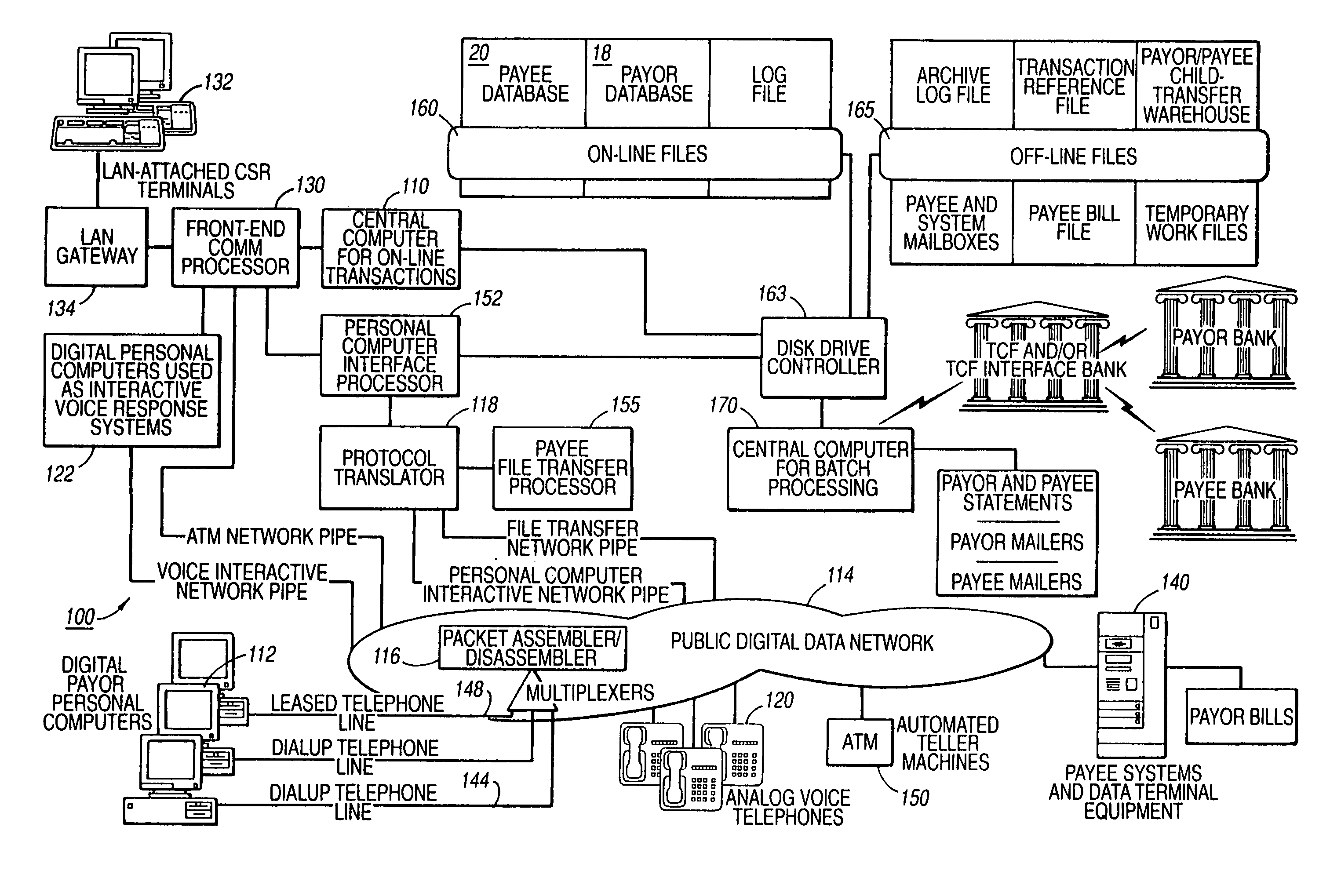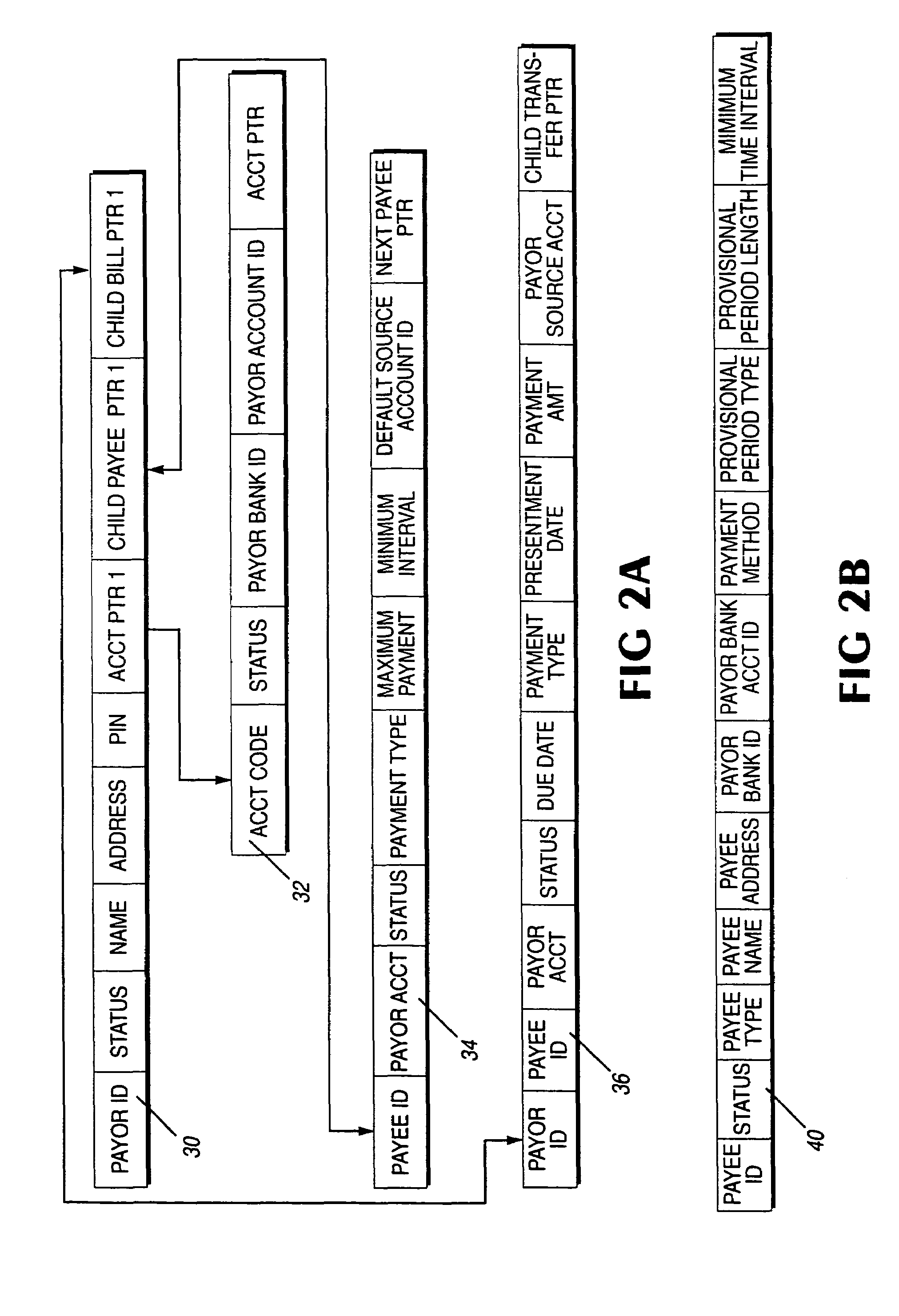While these systems utilize a variety of components to implement a number of different procedures, they all possess some drawback that limits the flexibility of the system.
Positive action bill payment has a number of disadvantages, including its labor intensive nature resulting from the various manual processes and procedures a payor performs to implement it and the relatively high costs in
invoice preparation, delivery, check charges, and check clearing processes for the payee.
Such systems have been implemented in certain European countries as a single document billing / bill paying procedure, however, these documents often do not provide the payee with a negotiable instrument upon
receipt, and generally do not meet the requirements of the check clearing processes of the Federal Reserve
System in the United States.
While these systems offer a payor access to multiple payees and may facilitate bill paying by debiting a payor's account and crediting the appropriate payee's account, the payment mechanisms require substantial
human interaction for each bill.
While these systems may permit a payor to cancel a bill payment action entered by a payor within a predetermined
waiting period, these systems do not permit a payor to reverse a bill payment once
processing of the bill payment action has commenced.
In addition, positive action bill payment systems are cumbersome, costly, and inconvenient because manual processes are usually required to pay each bill.
Nor do most of these systems empower the payor to manage the time for or amount of payment of bills including the reversal of payments previously made.
While this arrangement only requires payor action for the initial
authorization to pay the payee debit messages, its acceptance in the industry has been unspectacular, as payors recognize that their control of the timing and amount of the payment is often forfeited in exchange for the need to respond to bills presented by each payee.
For example, many of these systems have no flexibility regarding the payor's ability to determine when the bill is paid, and the payer is relegated to conforming to each individual payee system's predetermined dates and times for payment.
Moreover, the payor has little or no control over each periodic payment, other than to completely terminate the bill payment service with the payee.
In addition, there is usually no way for the payor to independently reverse a payment that has already been made without the cooperation and / or permission of the payee.
Due to the relatively low acceptance of these systems, the fees generated by the number of participants and the corresponding volume of message traffic in such systems are also relatively low and the overall costs are higher.
However, such systems still suffer the limitation that payors do not exert control over payment of the payee bills after the initial
authorization and payees do not modify the recurring
data file without the use of manual processes by the
third party provider.
Financial industry acceptance of these fixed negative action systems has been unspectacular for many of the same reasons cited above.
These systems do not accommodate bills or debts that vary in amount from month to month based upon customer usage and the payees in such a system often have to be financial institution accounts (e.g., mortgage loans, installment loans, leasing account, etc.) and may also have to be at the financial institution which is the provider of the payment arrangement, thus further limiting the convenience and applicability of these options.
While this system does provide for simplified accounting and account tracking procedures, it includes deficiencies similar to other systems described above in that it lacks provisions for the shippers to control the timing of payments, modification of billing payment amounts, and / or reversal of payments after they are made.
Consequently, while a variety of bill payment systems directed to positive / negative, single payee / multiple payee, and interactive systems and methods, have been provided in various forms to address shortcomings for general billing and bill payment procedures, these systems and methods have suffered from significant drawbacks of inconvenience, high costs, lack of universal applicability and acceptance by payors, lack of flexibility, and lack of control over payment amounts and payment timing by the payors.
Many previously known systems are limited in that they require positive action by the payor to implement payments, are available only for certain types of bills and debts of predetermined amounts, require implementation of specialized equipment by individual providers of services and / or goods, rely solely upon Federal Reserve
Bank ACH systems to accomplish payments between various financial institutions, and / or compromise the payor's ability to control payment amount, timing or reversal of payment, or
access to information regarding the current status of upcoming or previous payments.
 Login to View More
Login to View More  Login to View More
Login to View More 


